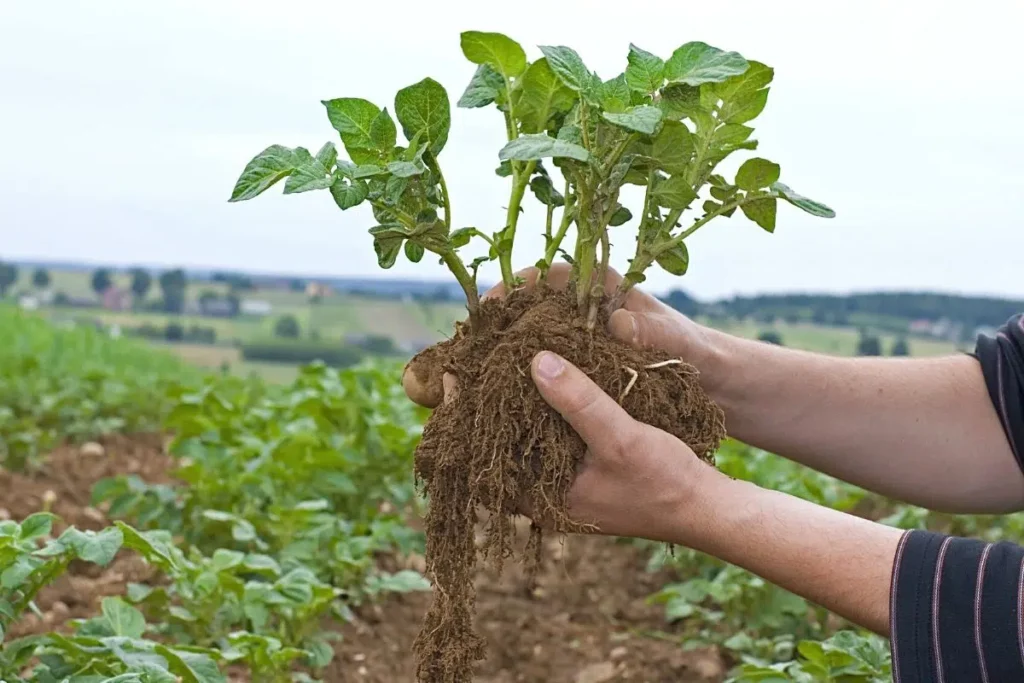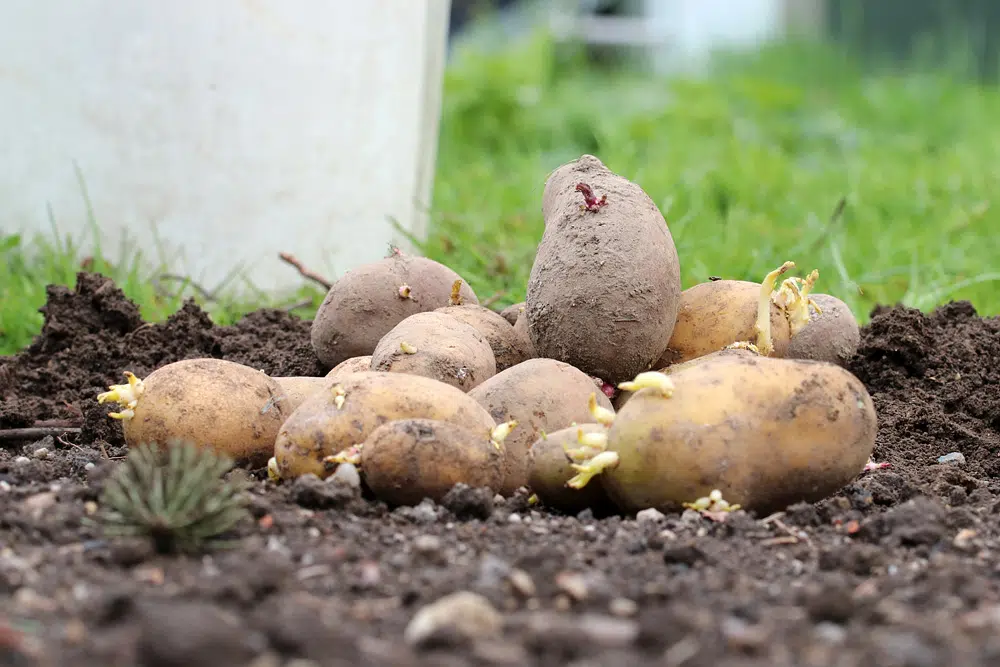Hardly any crop survives the winter, when the soil freezes completely. Or does it? What impact do sub-zero temperatures, when temperatures fall just below 0°C, have on vegetable cultivation, especially potato cultivation? This guide explains how much frost potatoes can tolerate.
Contents
- 1 Potatoes tolerate frost only slightly
- 2 Warm early years cause crop failure
- 3 The right soil conditions
- 4 Sprinkling as frost protection
- 5 Foil cultivation as frost protection
- 6 Never harvest potatoes during frost
- 7 Frequently asked questions
- 8 Does frost mean automatic death of the potato?
- 9 Can frost also be beneficial?
- 10 Author
Potatoes tolerate frost only slightly
Potatoes love a warm environment. They feel most comfortable in a sunny location. Soil temperatures of 8°C to 10°C are optimal. On the other hand, they are very sensitive to frost. Nevertheless, the tubers are more robust than other vegetables, because they can tolerate minor subzero temperatures for a short period of time. The important thing is that it does not freeze as long as the flower appears. After all, then the tubers can not be saved. Soil frosts after flowering, on the contrary, cause little damage.
Note: Even in unfavorable weather, complete crop failure is unlikely in potato production, because different varieties are planted at different times of the year.
Warm early years cause crop failure
On the one hand, early flowering due to warm temperatures brings joy to potato growers. On the other hand, it comes with concerns that frost will return and destroy the crop. By the time the Ice Saints arrive in mid-May, the thermometer may drop below freezing at night. Until then, farmers have to worry that their tubers will “burn,” as it is called in technical jargon. In principle, frosty nights in April are not uncommon. What’s more, they pose only a slight risk. It only becomes critical when March brings unusually warm temperatures. Then the tubers begin to germinate prematurely and are particularly susceptible to icy sub-zero temperatures with their flowers.
Early potatoes are particularly sought after
Normally, a potato is not planted outdoors before April because the tender tubers cannot tolerate night frosts. However, more and more farmers are looking past this rule. It is the sought-after early potatoes that make early sowing so lucrative.
Varieties that are at risk due to their earliness
- Altesse
- Annabelle
- Anuschka
- Belle de Fontenay
- Casablanca
- Duke of York First
- Early Rose
- Finka
- Freislander
- Glorietta
- La Rat
- Leyla
- Maris Peer
- Orla
- Rosara
- Soloist
Pre-growing boosts harvest
In order to be able to harvest the tubers as early as spring, many farmers rely on pre-bred plants. Their crops ripen about two weeks earlier, but require particularly careful tending. Since they are very sensitive to pressure, harvesting is sometimes even done manually.

First and foremost, this is for commercial purposes. The earlier traders can offer their vegetables, the less competition there is for sales. In addition, early potatoes are particularly popular with customers because of their delicate aroma.
Tip: If you want to plant pre-sprouted potatoes in your home vegetable patch, you can grow the tubers in a bright place at 10°C to 15°C about 6 weeks before the actual sowing
The right soil conditions
The soil requirements of the potato speak for themselves. The tuber thrives best on light to medium-heavy soil. Loamy soil, on the other hand, hinders growth. The situation is reversed during frosts. Heavy soils tend to retain water and freeze more quickly. Anyone who grows the tasty tubers in their own garden should therefore ensure that the soil is well-drained in order to avoid frost damage due to waterlogging.

Sprinkling as frost protection
Another method of protecting potatoes is sprinkling. Field workers have to work a night shift to do this. Just before the frost sets in, they water the plants. The fine water droplets freeze on the leaves, flowers and tubers, forming an ice shield. This protects against the cold temperatures.
Foil cultivation as frost protection
There are numerous ways to protect vegetables from frosts. For one, growers cover the plants with film. Under the material, the temperature can be regulated, as a greenhouse is created. However, it is important that the cover, which also protects against precipitation such as hail, is breathable. Otherwise, there is a risk of mold.

Note: in your own garden it is rather unusual to grow potatoes to such an extent that a film cover is worthwhile. If there is little green on the surface of the soil so far, merely mounding or applying a layer of mulch are time- and material-saving alternatives
Never harvest potatoes during frost
For both commercial growers and amateur gardeners, never harvest vegetables in sub-zero temperatures. The plants cannot recover from the loss in the cold temperatures, as they have to use all their strength to fight off the cold.
Frequently asked questions
Does frost mean automatic death of the potato?
Minor frost damage will not completely kill the plant if you are lucky, but it will increase susceptibility to disease and reduce crop yield.
Can frost also be beneficial?
Aside from potatoes, there are many plants that not only tolerate frosty temperatures, but actually depend on them. An example is the daffodil, whose budding occurs only after stratification. Soil frost prevents the flower from sprouting too early and serves as its orientation for the seasons.


